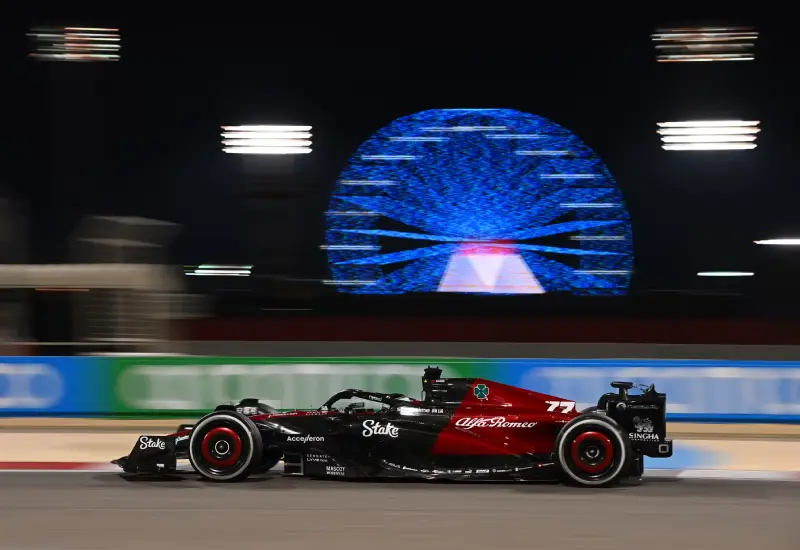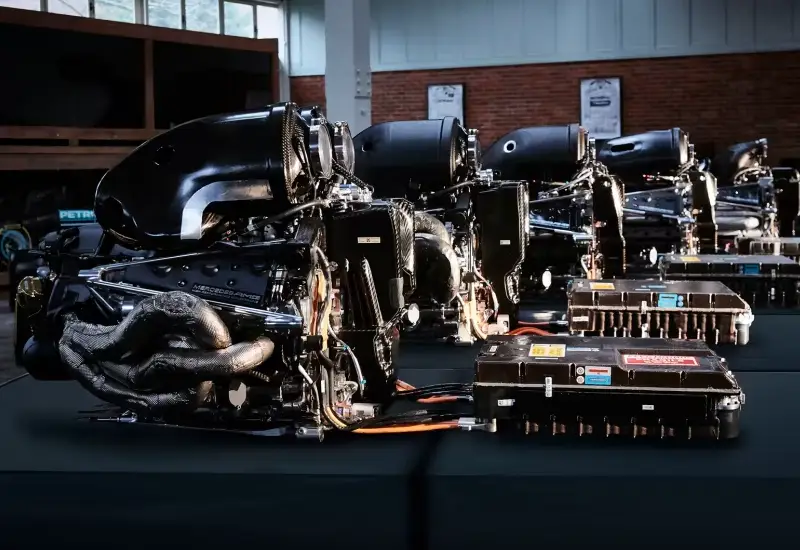The world of Formula 1 is a breathtaking blend of cutting-edge engineering, high-speed racing, and pure adrenaline. At the heart of this spectacle are the magnificent machines known as Formula 1 cars. These technological marvels represent the pinnacle of motorsport engineering, showcasing innovations and advancements that push the boundaries of what is possible on the racetrack. In this article, we will look into the captivating world of F1 cars, exploring their history, design, engineering, and the fascinating intricacies that make them so awe-inspiring.
Table of Contents
ToggleHistory of F1 Car
The roots of Formula 1 can be traced back to the early 20th century, with the first recognized Grand Prix held in 1906 at Le Mans, France.
However, it was not until 1950 that the FIA (Fédération Internationale de l’Automobile) organized the inaugural Formula 1 World Championship. Since then, F1 has grown into a global phenomenon, captivating millions of fans worldwide.
In the early days, F1 cars were relatively simple and resembled ordinary road cars, but as the sport progressed, the machines evolved into the aerodynamic marvels we know today.
The 1960s saw the introduction of rear-engine layouts, which improved weight distribution and traction, revolutionizing the sport.
The 70s brought the era of iconic ground-effect cars, which used underbody aerodynamics to increase downforce and grip.

In recent decades, advancements in materials, computational fluid dynamics, and electronics have catapulted F1 cars into another dimension of performance.
Today’s machines are sleek, sophisticated, and incredibly fast, capable of reaching speeds well over 200 mph and executing jaw-dropping maneuvers with surgical precision.
F1 Car Design
At the core of an F1 car lies a monocoque chassis, a single-piece carbon fiber structure that serves as the vehicle’s backbone.
This lightweight and incredibly strong design ensures driver safety and structural integrity. The chassis also houses the cockpit, where the driver sits, surrounded by high-tech safety equipment like the HANS device and a carbon fiber seat molded to their body shape.

Every element of an F1 car is designed with one goal in mind: speed. Aerodynamics plays a critical role in achieving this, with teams spending countless hours in wind tunnels and utilizing computational simulations to refine the car’s aerodynamic profile.
Wings, diffusers, bargeboards, and other components generate downforce, allowing the car to stick to the track and take corners at unimaginable speeds.
Formula1 Parts
One of the most critical components is the power unit, consisting of the 1.6-liter V6 turbocharged engine and the Energy Recovery System (ERS).
The aerodynamics of an F1 car is equally vital, featuring sophisticated front and rear wings, bargeboards, and diffusers that create immense downforce to ensure the car stays firmly glued to the track, enabling it to tackle corners with incredible precision.

The suspension system, comprised of wishbones, pushrods, dampers, and springs, plays a crucial role in maintaining tire contact with the road, providing the necessary grip for high-speed maneuvers.
F1 cars’ custom-made tires by Pirelli are specifically designed to handle the extreme forces generated during racing, offering unparalleled grip and durability.
The steering wheel acts as a multifunctional command center, allowing drivers to make real-time adjustments, communicate with the team, and access crucial race data.

Carbon ceramic brakes, transmission systems, advanced electronics, and the fuel tank complete the ensemble of Formula 1 car parts, ensuring they are the epitome of cutting-edge technology and unparalleled performance in the world of motorsport.
F1 Car Engine
The powerful and highly advanced engines power Formula 1 cars. The current regulations, introduced in 2014, stipulate the use of V6 hybrid power units.
These engines are smaller and more fuel-efficient than their predecessors but still produce impressive power outputs. The F1 car’s horsepower is about 950 to 1050 horsepower.
The F1 power units consist of a 1.6-liter V6 turbocharged engine paired with two energy recovery systems.
The first system is called the MGU-K (Motor Generator Unit-Kinetic), which recovers kinetic energy from the braking and reuses it to provide an additional power boost.
The second system is the MGU-H (Motor Generator Unit-Heat), which recovers heat energy from the exhaust gases and converts it into electrical energy.
The F1 engines are highly complex and require meticulous engineering and design. They are compact and lightweight, weighing around 145 kg.

The engines also feature advanced technologies like direct fuel injection, pneumatic valve springs, and turbocharging. The turbocharger helps improve efficiency by using the exhaust gas to drive a turbine, which then compresses the incoming air for improved combustion.
F1 car tires
F1 car tires are meticulously crafted to withstand the immense forces and demands of high-speed racing.
The tires’ construction and compound are tailored to each racetrack and specific weather conditions, ensuring optimal performance during each race.
Pirelli, the official tire supplier of Formula 1, is at the forefront of tire technology, employing advanced materials and compounds to meet the sport’s unique challenges.
The tires must provide enough grip to keep the car firmly planted during high-speed cornering while also enduring extreme braking forces.
Moreover, they play a significant role in strategic race planning, as tire wear and degradation affect pit-stop strategies, influencing the outcome of the race.
The continuous pursuit of tire perfection is a never-ending journey in Formula 1, as teams and tire manufacturers strive to gain the competitive edge required to dominate the ever-changing world of motorsport.
How much does an F1 car cost in 2023? (F1 Car Price)
The price of an F1 car can vary significantly depending on several factors, including the team’s budget, the level of customization, and the specific season’s technical regulations.
On average, a new Formula 1 car can cost between $8 million to $20 million. However, it’s important to note that these figures are estimates, and the actual cost can be higher due to ongoing development and engineering expenses.

It is justified that an F1 car costs so much due to its cutting-edge technology, materials, and extensive research and development.
These cars are built to push the boundaries of speed, aerodynamics, and efficiency, making them some of the most sophisticated and advanced vehicles in the world of motorsport.
F1 Car Weight
The weight of an F1 car is tightly regulated by the FIA (Fédération Internationale de l’Automobile) to ensure fairness and safety in the sport.
The minimum weight for an F1 car, including the driver and onboard fluids (like fuel and lubricants), is set at 798 kilograms (1,759 lbs).
This minimum weight limit takes into account the advances in technology and materials used in F1 car construction.

It ensures that all teams have a level playing field, as lighter cars could otherwise gain a significant advantage in terms of speed and handling.
The regulations are designed to promote competitive racing and prevent excessive spending on lightweight materials that could compromise safety.
How fast does F1 car go?
The top speed of a Formula 1 car varies depending on various factors, including the track layout, aerodynamic setup, engine power, and weather conditions.

F1 cars are capable of reaching top speeds of around 220-240 mph (350-386 km/h) on long straights, such as those found at Monza, Italy, or Baku, Azerbaijan. Also, the F1 car 0-100 km/h (0 to 62 mph) is about 2.5 seconds.
This remarkable feat is made possible due to the immense power and torque produced by the advanced hybrid V6 turbocharged engines and the exceptional grip provided by the specially designed Pirelli tires.
How long is a Formula 1 car? (F1 Car Lenght)
The length of a Formula 1 car typically ranges between 5.4 to 5.63 meters (212 to 221 inches). The specific length may vary slightly depending on the design of the chassis and the regulations set by the FIA (Fédération Internationale de l’Automobile) for each season.

F1 cars are designed to be aerodynamically efficient, and their length is optimized to balance stability, downforce, and straight-line speed.
The sleek and elongated shape of the car, along with the aerodynamic components like front and rear wings, bargeboards, and diffusers, allows the car to cut through the air with minimal drag and maximize downforce for enhanced cornering performance.
Formula1 Car Drivers
While the cars are undoubtedly engineering marvels, it’s essential not to overlook the human element that makes Formula 1 so captivating.
The drivers themselves are exceptional athletes who undergo intense physical and mental training to handle the incredible forces and stresses that come with piloting an F1 car.
Their reflexes, concentration, and decision-making abilities are pushed to the limits, and the tiniest mistake can mean the difference between victory and defeat.

Furthermore, the entire F1 ecosystem revolves around a team effort. Each team comprises hundreds of engineers, mechanics, strategists, and support staff, all working tirelessly to provide the drivers with the best possible car and race strategy.
This blend of engineering brilliance and human dedication is what sets Formula 1 apart from other motorsports.
Final Word
Formula 1 cars embody the perfect blend of human ambition, engineering ingenuity, and the quest for speed.
Their evolution from simple road car derivatives to highly sophisticated racing machines reflects the progress of human innovation and technology.
As F1 continues to push the boundaries of what’s possible, we can only imagine the astonishing developments that lie ahead in the world of Formula 1 racing, captivating audiences for generations to come.
Are you a formula one fan? F1 Qatar 2024 will be held in October, Check out our package for F1 Qatar 2024 Tickets.











